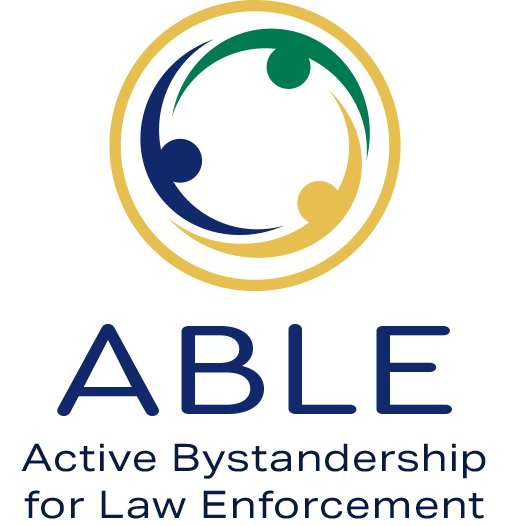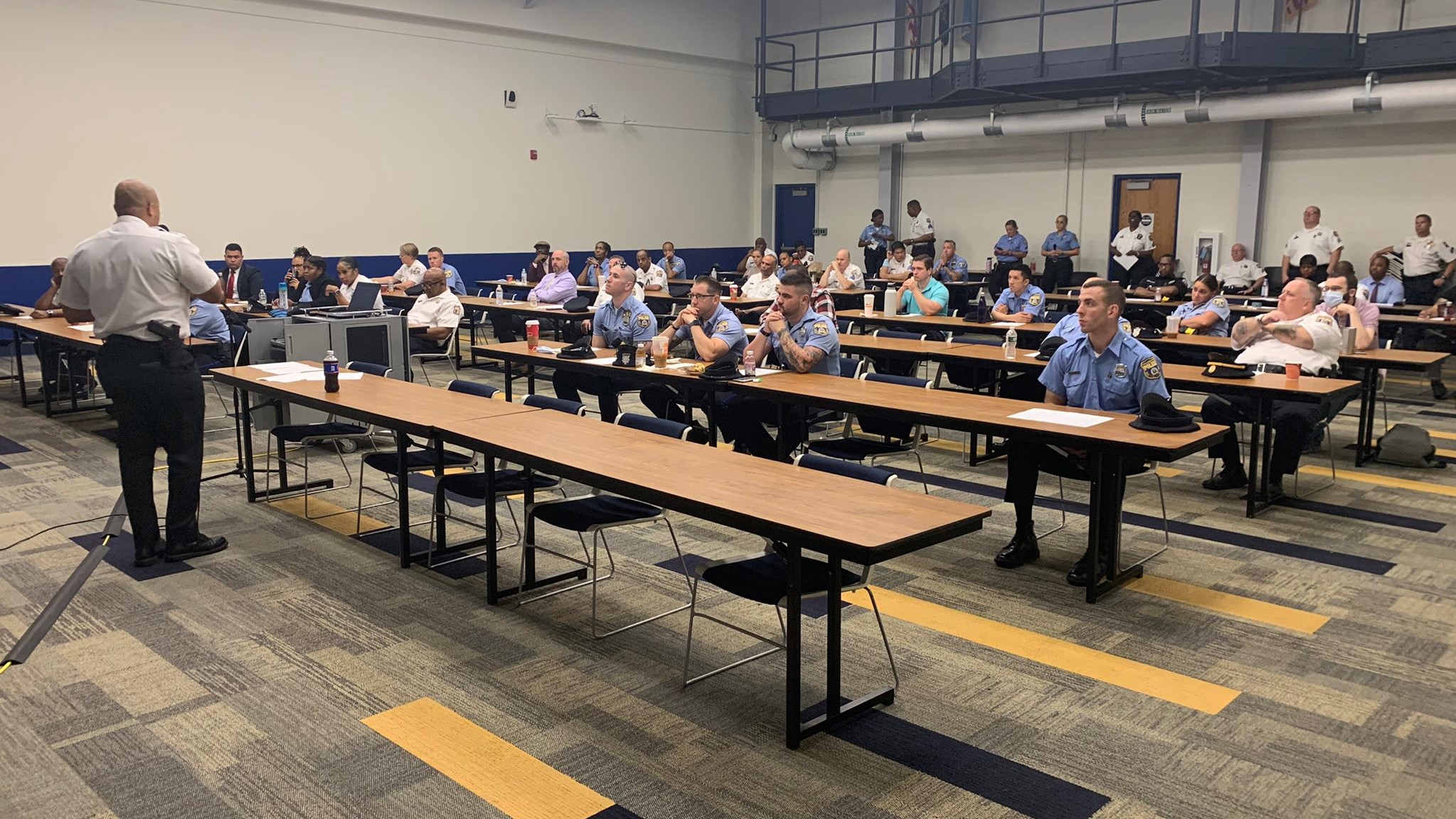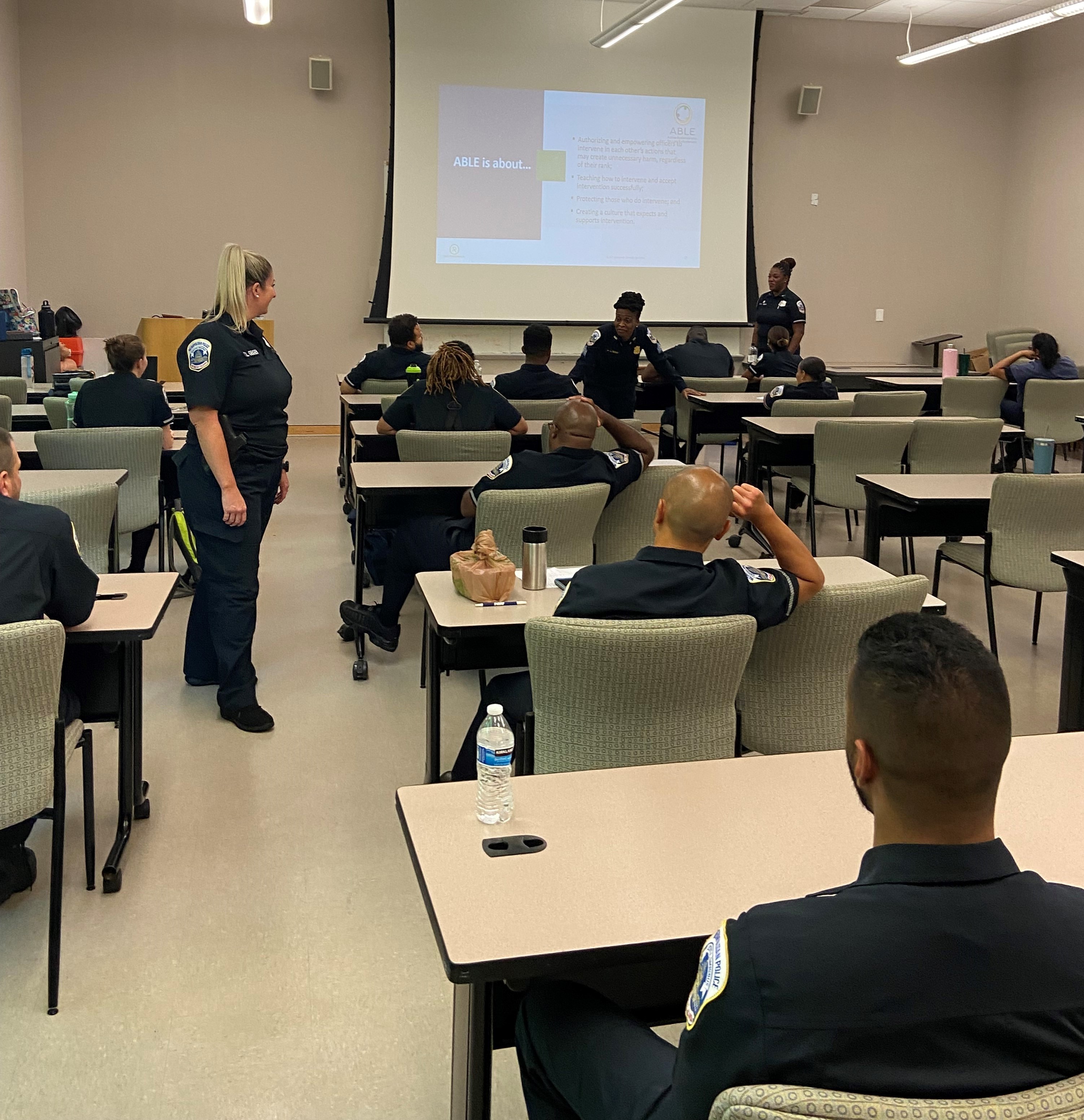Contact Us
To provide feedback on the Community Policing Dispatch, e-mail the editorial board at CPDispatch@usdoj.gov.
To obtain details on COPS Office programs, publications, and resources, contact the COPS Office Response Center at 800-421-6770 or AskCopsRC@usdoj.gov

U.S. Department of Justice
Office of Community Oriented Policing Services
Washington, DC 20530
 The most visible recent example of a lack of peer intervention in an officer misconduct situation was the murder of George Floyd in Minneapolis, Minnesota, in May 2020. This improper use of restraint led to a man’s death, and the failure of other officers to intervene—despite existing Minneapolis Police Department policies requiring intervention and ample time in which to do so—resulted in the removal of five working professionals from a department and a field that are struggling to recruit.
The most visible recent example of a lack of peer intervention in an officer misconduct situation was the murder of George Floyd in Minneapolis, Minnesota, in May 2020. This improper use of restraint led to a man’s death, and the failure of other officers to intervene—despite existing Minneapolis Police Department policies requiring intervention and ample time in which to do so—resulted in the removal of five working professionals from a department and a field that are struggling to recruit.
To teach officers effective ways to step in when they witness misconduct and help agencies create a culture that supports such intervention, Georgetown University Law Center has developed a program called the Active Bystandership for Law Enforcement (ABLE) Project. Launched in 2021 by Georgetown’s Innovative Policing Program in partnership with the law firm Sheppard Mullin, ABLE grew out of the New Orleans Police Department’s (NOPD) Ethical Policing Is Courageous (EPIC) peer intervention program.
Built on the EPIC Model
EPIC, which was introduced five years earlier, was based on the work of Dr. Ervin Staub, a psychologist whose teaching focuses on moral courage and active bystandership.

leading ABLE training.
Developed in collaboration with a working group that included law enforcement, community members, and legal professionals, EPIC not only teaches officers how to stop a wrongful action but also empowers them to do so. The positive response to EPIC prompted the co-leaders of Georgetown University Law Center’s Program on Innovative Policing, Jonathan Aronie, a lawyer with Sheppard Mullin, and Christy Lopez, to scale it up for other law enforcement agencies.
Says Aronie, “In the first two weeks following the killing of George Floyd, more than 100 agencies asked for the program. Some just wanted a PowerPoint to read to their people, but others realized that wasn’t enough. So we designed ABLE to be attractive to those looking for true cultural change, not just window dressing and a slogan.”
The 10 Standards of ABLE
To make ABLE holistic and a catalyst for change, its Board of Advisors developed 10 standards for agency participation:
- Community Support, demonstrated through four letters: two from community organizations, one from the agency leader, and another from the mayor or other government leader
- ABLE Training for all officers, from recruits to command staff, plus annual refresher courses
- Dedicated Coordination by a designated program coordinator who will roll out, promote, and reinforce the program
- Program Awareness through regular internal and external communications promoting the principles and benefits of peer intervention
- Accountability based on a strong, written anti-retaliation policy ensuring that interveners are not punished or ostracized—or if they are, that the agency will fully investigate
- Officer Wellness supported through a program that includes access to counselors or social workers for guidance and support
- Reporting obligations that don’t change from pre-ABLE participation
- Measuring Officer Perceptions through pre-implementation and post-implementation surveys of personnel who receive ABLE training
- Follow-Through to ensure department-wide implementation, with the full support of agency leadership
- Paying It Forward by making the agency’s ABLE-certified instructors available to help train other agencies accepted into the program
Training from the Top Down
Training is an essential component of the ABLE Project and is required of everybody in a participating agency, from the chief or sheriff on down. The interactive ABLE course includes role-playing in scenarios similar to officers’ everyday experiences.

The program uses a train-the-trainer model (offered virtually as well as in-person), whereby instructors are trained and certified and then deliver the program to their colleagues. This enables small agencies to share trainers and resources. At-large instructors are also available from the FBI’s National Academy Associates program.
Though some agencies train sworn and civilian personnel together, ABLE is working on a course for nonsworn personnel, with role-playing that addresses the power dynamics between officers and civilians. A curriculum for corrections officers is being developed as well.
The project also provides help with implementation, plus a variety of resources including a training portal and a model policy for protecting officers who intervene.
Adaptable to All Law Enforcement Agencies
ABLE can benefit agencies of all sizes, including municipal, county, parish, state, and campus police as well as sheriffs’ offices. Federal law enforcement agencies have expressed interest in joining as well. It provides training in best practices but does so in a way that agencies can adapt to fit their own needs and culture.

Since the program was inaugurated, more than 140 law enforcement agencies in the United States and three in Canada have been accepted into the program. Among them is the Metropolitan Police Department (MPD) of Washington, D.C. (MPD).
“We all agreed that training around the duty to intervene was needed,” says Marvin Haiman, the Executive Director for MPD’s Professional Development Bureau.
“So I asked Sergeant Paul Skelton if he was willing to lead this effort, and he said he would consider it an honor,” notes Haiman. “I don’t get that reaction very often, but Skelton said that from his 20 years on the street, he believes that every cop should go through intervention training and will walk out of it a better police officer.”
“In the past six months, MPD has trained half of its 3,600 officers,” he adds. “And officers who’ve been in the trenches for years say it was a valuable experience. They know that intervening could save somebody’s career—and that accepting intervention would reduce the penalty if the officer was disciplined.’
“ABLE training drives home the point that intervention is not only okay but required in a misconduct situation.”
Practical Intervention Strategies
Benefits of ABLE Intervention
Reduces:
- Citizen complaints
- Disciplinary action and officer job loss
- Risk of lawsuits
- Unnecessary harm to civilians and officers
Improves:
- Citizen support of law enforcement
- Community/police relations
- Job satisfaction
- Officer health and wellness
“Police agencies tell their people to be courageous but don’t often give them the skills to intervene successfully. Historically, the focus has been only on the duty. ABLE focuses on the how,” says Aronie. “It walks officers through their concerns and inhibitions, then teaches practical strategies for intervening. Just as importantly, it makes intervention easier to accept.”
“Among ABLE’s training models is the ‘three D’s’—distract, delegate, direct—which are different ways to intervene. And they’ve long been deployed in hospitals, the airline industry, and other first responder professions,” he adds.
To illustrate, Haiman describes a situation in which an officer is about to use excessive force. “A colleague redirects him, by saying, ‘I got this. Talk to the witness over there.’ If the officer starts to use unnecessary force anyway, the intervening officer can say, ‘We need you in the squad car to run the information.’”
Haiman emphasizes that the way this intervention was done didn’t diminish the first officer’s authority. He also stresses that accepting it saved that officer’s career. “Had he used unnecessary force, he would have been fired,” he says. “ABLE trains officers not only to intervene effectively but [also] to be receptive to intervention themselves,” he adds.
No Change in Tactics or Reporting Responsibilities
Haiman also stresses the fact that ABLE doesn’t teach a different use of force model. “It’s not a reporting program, either,” he adds. “An officer doesn’t have to report a successful intervention if nothing improper happened. Though I’ve seen interventions on body-worn camera footage that would have had to be reported if an officer hadn’t stepped in.”
According to the International Association of Chiefs of Police (IACP) report Peer Bystander Intervention in Law Enforcement Agencies, the adoption of peer bystander intervention policies and practices can not only enhance community relationships and reduce citizen complaints but, by reducing incidences of misconduct and use of excessive force, can increase officer safety and wellness too.
An intervention can save an officer’s career and reputation. Knowing that their colleagues will step in if necessary can add immeasurably to every officer’s peace of mind.
Moreover, the benefits go beyond the job. Says ABLE Project Director Lisa Kurtz, “It’s inspiring to hear officers say ABLE changed not only the way they approach police work, but the way they approach their lives.”
The Collaborative Reform Initiative Technical Assistance Center (CRI-TAC) is developing two trainings (direct and train-the-trainer) that will also provide law enforcement with the knowledge and skills necessary to be active bystanders and intervene or allow an intervention to prevent misconduct or unethical behavior. CRI-TAC will pilot the training in late summer 2021, with a full implementation roll-out in late 2021.
For more information, please see Intervention Training: Voices from the Field.
Faye C. Elkins
Sr. Technical Writer
COPS Office
Subscribe to Email Updates
To sign up for monthly updates or to access your subscriber preferences, please enter your email address in the Subscribe box.






